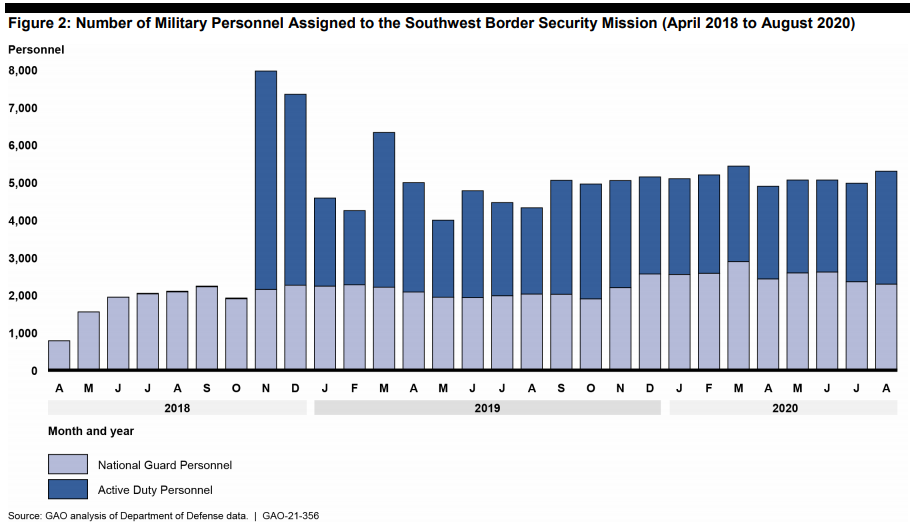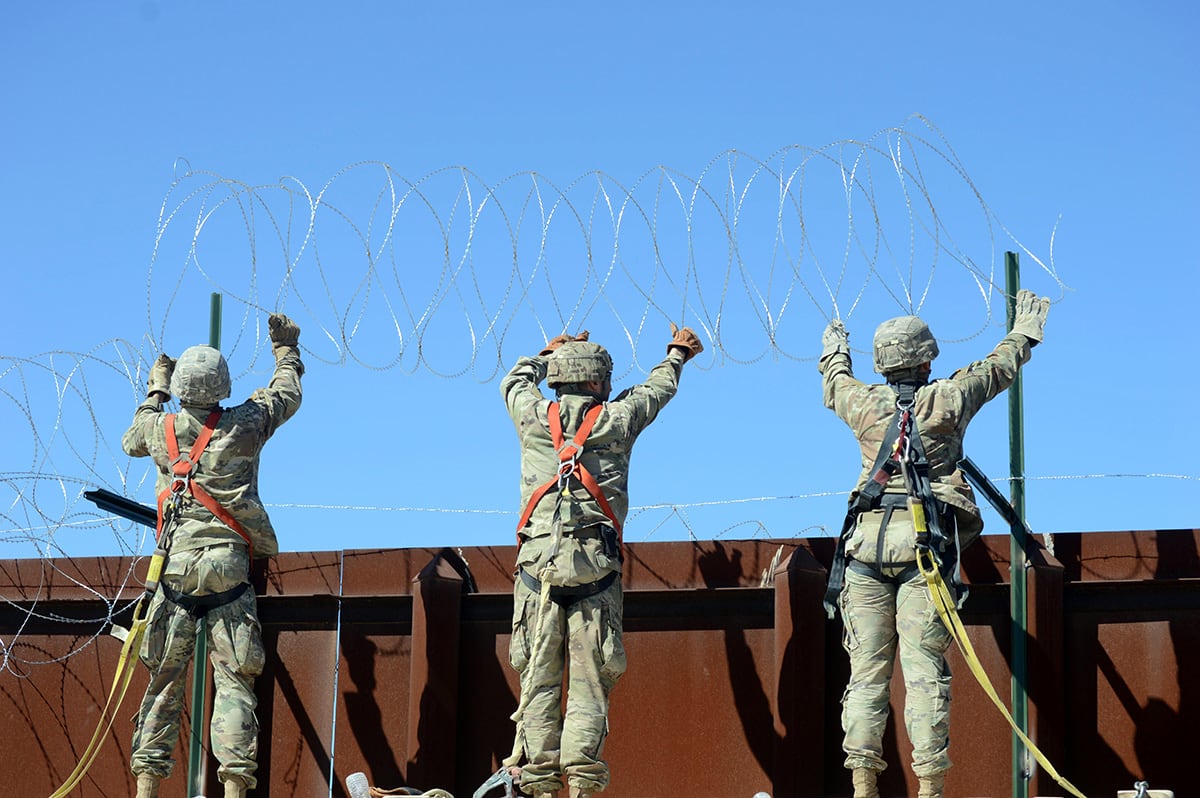The Pentagon spent more than $800 million deploying troops to the U.S.-Mexico border between 2018 and 2020, according to a recent Government Accountability report, which found that the Defense Department bungled its cost analyses when it came to both the amount of money and readiness it would expend in supporting then-President Donald Trump’s national emergency declaration.
It also failed to identify a goal for the outcome of the deployments, according to the GAO, which the Pentagon has indicated will continue at least through this fiscal year.
“GAO found that DoD developed rough cost estimates that were not reliable,” the report reads. “In addition, DoD did not fully evaluate the effect on military readiness of providing support at the time the Secretary of Defense considered DHS’s requests.”
DoD maintains it used thorough cost estimate tools and collaborated with the Joint Staff before selecting units, both active duty and reserve component, to deploy. The GAO, however, pointed to specific examples of readiness rot.

Members of an active-duty UH-60 Black Hawk unit, for example, told GAO researchers that their training suffered as a result of being sent to the border.
“Specifically, according to military personnel, the battalion lost a training slot at the National Training Center, a battalion-level large-scale training opportunity that enables units to gain proficiency in unit-level mission essential tasks,” the report reads. “They also said that the pilots experienced challenges completing individual training requirements such as night flying and multi-helicopter flying, as well as insertion and extraction exercises, among others.”
That type of cost estimate was not included in any of the documentation of the review process the Pentagon completed for each of 33 requests for assistance from the Homeland Security Department, according to the report.
The GAO also could not find documentation that explained how the Pentagon estimated its total costs for the deployments, which it pegged at a $1 billion over the three years in question.
“We were not able to fully assess whether DoD’s estimates were comprehensive or accurate because DoD did not have documentation to show the steps it took to develop estimates,” the report reads.
In another instance, about 750 Texas National Guardsmen were pulled back from Customs and Border Protection support that included “providing welfare checks, distributing food, and driving trucks and vans.”
“In September 2019, the Secretary of Defense discontinued this mission after determining, with input from the Joint Staff, that personnel were not performing military functions and that continued support for the mission would negatively affect military readiness and morale,” according to the report.
Further, researchers found that DoD skipped out on its obligation to report 2019 costs to Congress, and that its internal cost-tracking did not include expenses like federal benefits paid out to National Guardsmen.
RELATED

The GAO recommended that DoD follow GAO best practices for creating cost estimates, both in dollars and readiness, as well as keep up with its reporting obligations to Congress.
DoD pushed back on the assertion that its cost analyses were not up to snuff, adding they were confident in the tools they used to estimate dollars spent and impacts on deployed units until the hurried circumstances.
The department blamed the delayed report to Congress on the COVID-19 pandemic, though its March 31, 2020 deadline came just as the workforce started working largely from home.
The Pentagon also disagreed with GAO’s recommendation that the department “define and articulate a common outcome” for the border deployments.
“DoD does not agree that it would be appropriate to develop a common outcome with DHS for DOD support beyond fiscal year 2021,” according to the response, but does not explain whether the intention is to withdraw the troops by October of this year.
Despite President Joe Biden canceling the border emergency in the first few hours after taking office, the Pentagon has repeatedly said that there are no plans to draw down the roughly 4,000 troops still deploying to the border.
Meghann Myers is the Pentagon bureau chief at Military Times. She covers operations, policy, personnel, leadership and other issues affecting service members.




